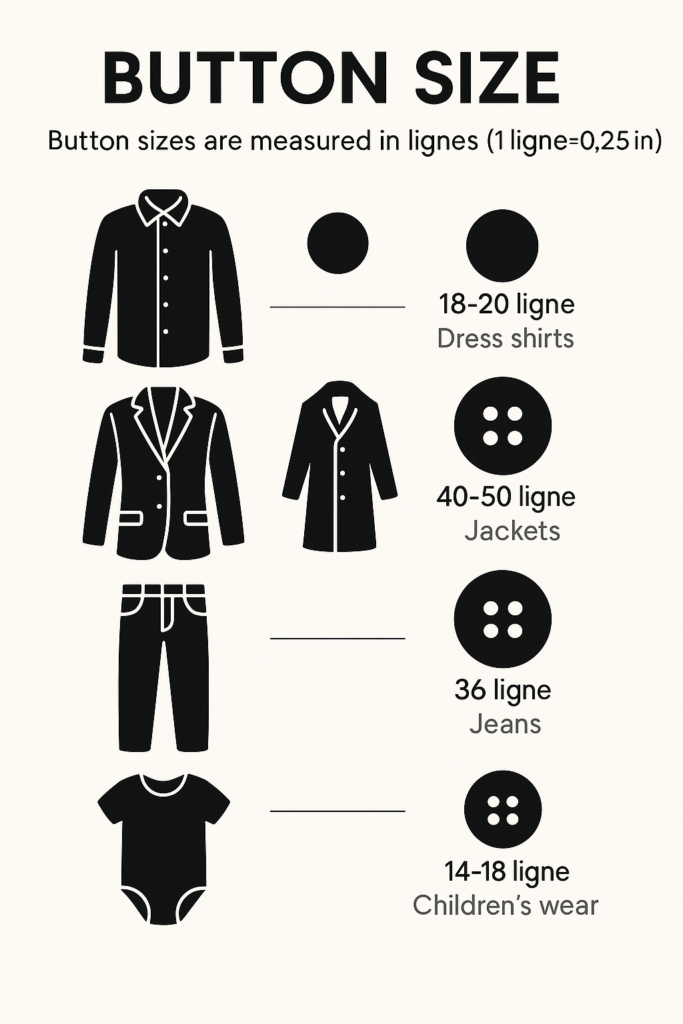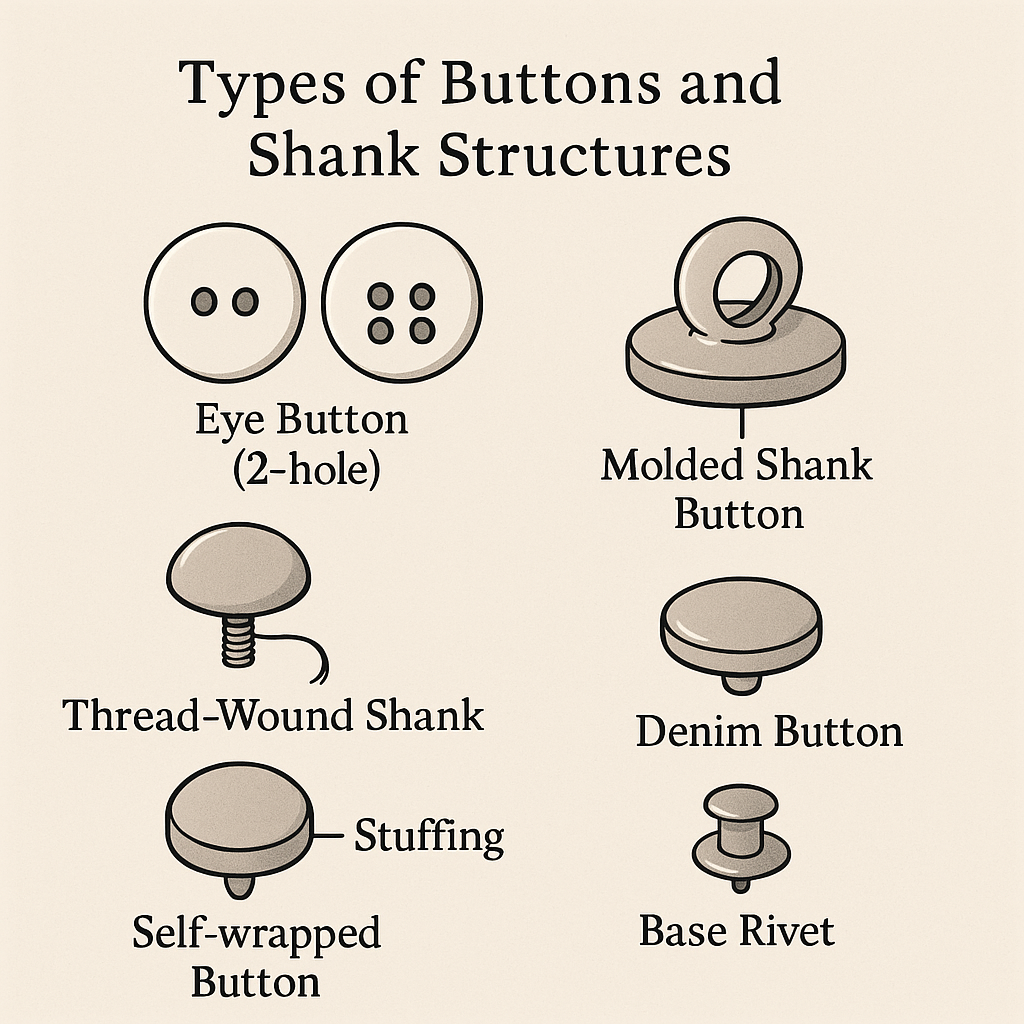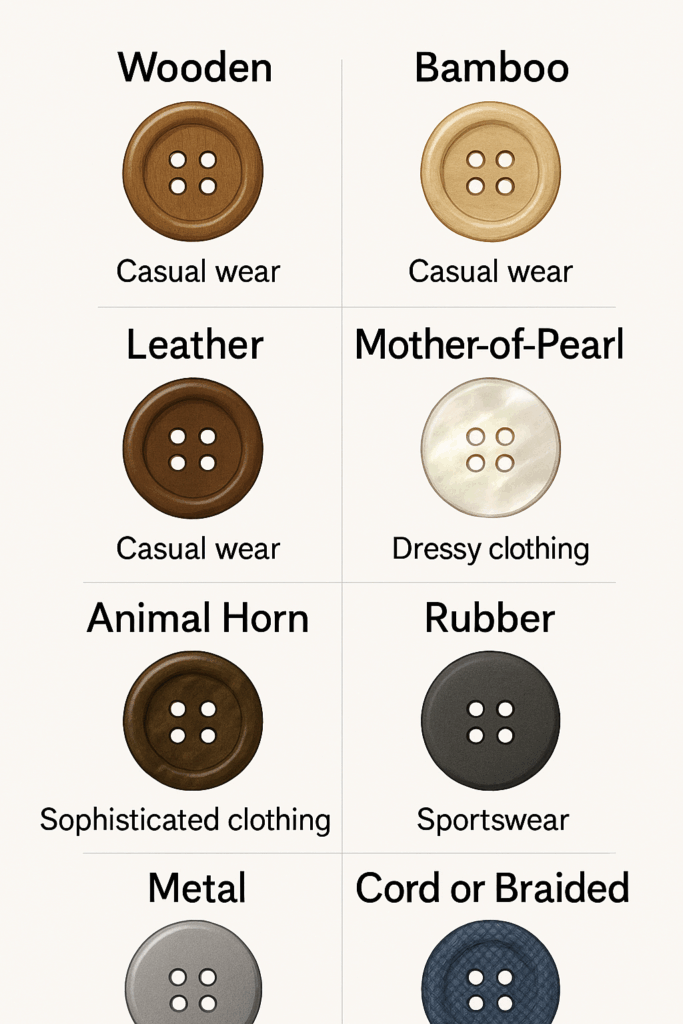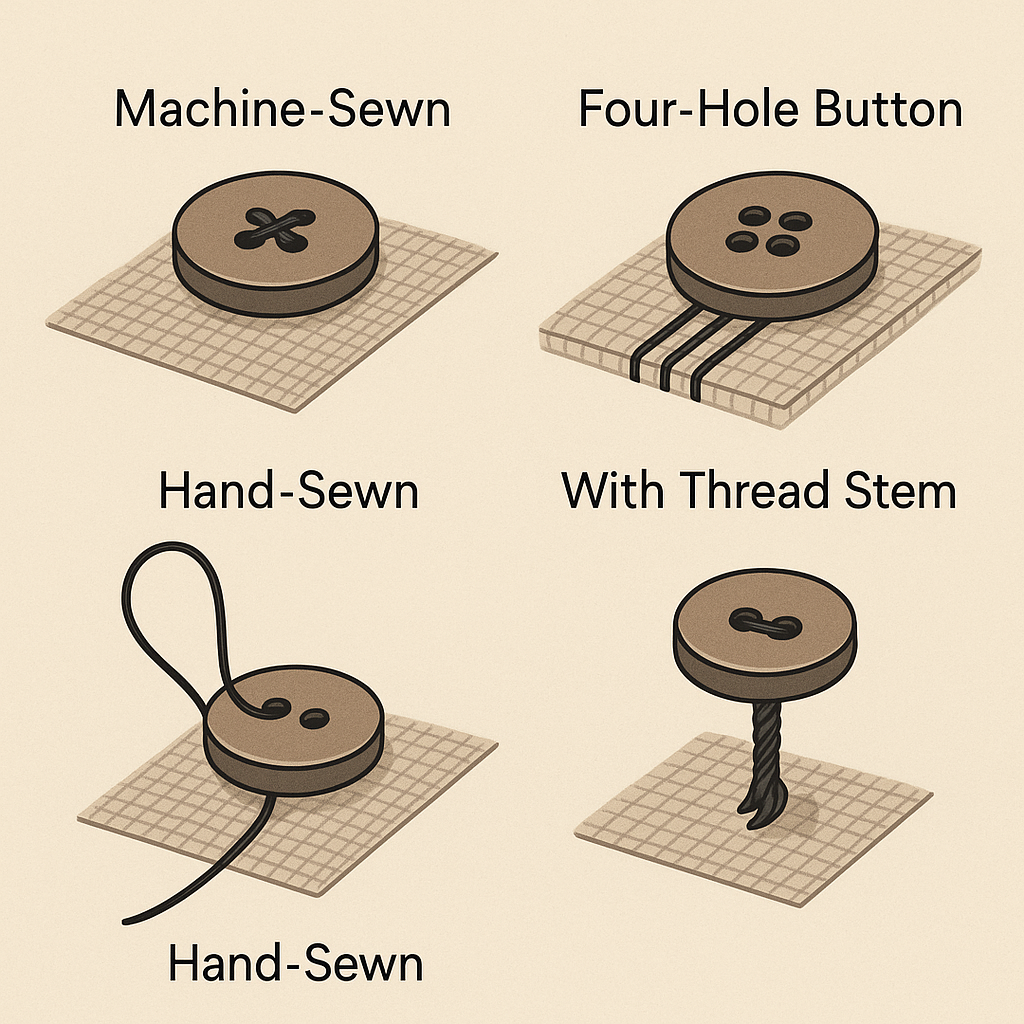🧷 Button Size Guide in Fashion Design: Ligne Measurement, Garment Use & Cost Considerations
Introduction
In garment design and manufacturing, button size isn’t just a detail — it plays a major role in a garment’s functionality, style, and cost. From delicate shirt buttons to bold coat fasteners, selecting the correct button size requires a technical understanding of measurements, placement, and fabric compatibility.
What Is Button Size?
Button size is defined by its diameter, typically measured in a unit called the ligne (″L″) — a traditional French measurement used exclusively for buttons. One ligne equals 1/40 of an inch (0.025 inches or 0.635 mm). So:
- 40 lignes = 1 inch
- 20 lignes ≈ 0.5 inch
- 36 lignes ≈ 0.9 inch
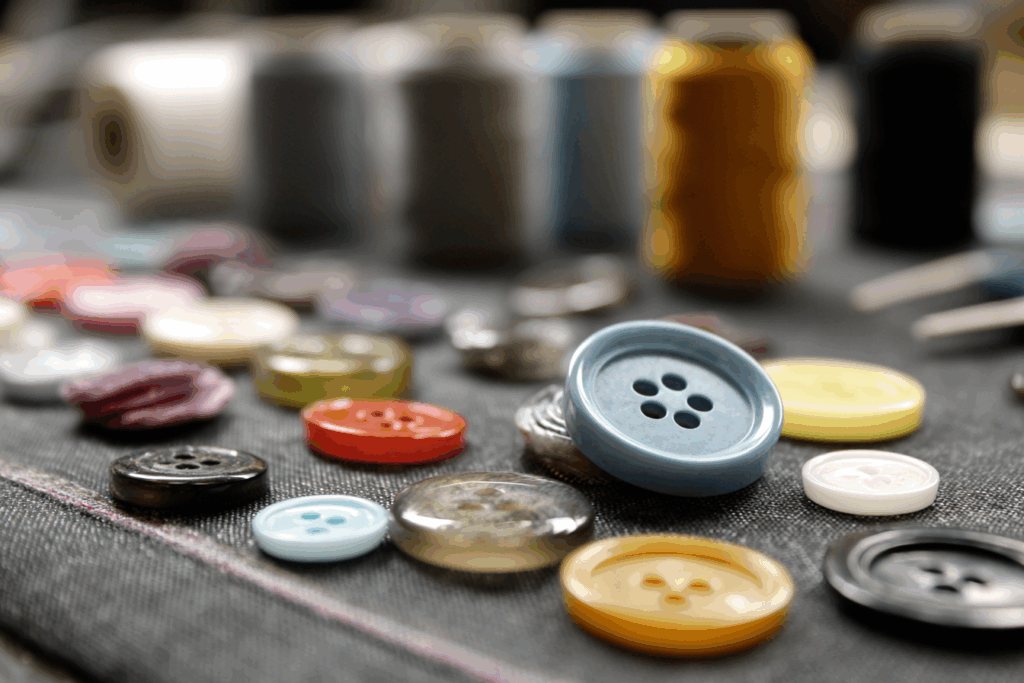
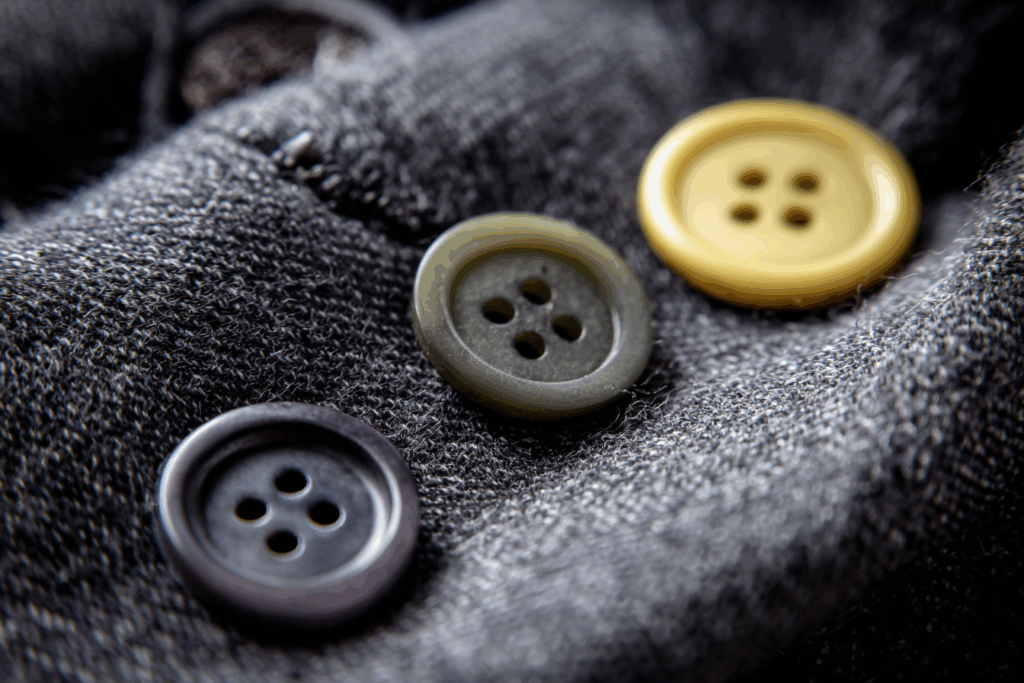
Standard Button Sizes by Garment Type
| Garment Type | Common Ligne Sizes | Diameter (approx.) | Notes |
|---|---|---|---|
| Dress Shirts | 18L – 20L | 11.5–12.7 mm | Used for front plackets, sleeve cuffs |
| Jackets | 30L – 36L | 19–23 mm | Medium-large buttons, often visible |
| Coats | 40L – 50L | 25–32 mm | Large and bold buttons for functionality & style |
| Jeans | 36L | 23 mm | Designed for strong grip and stress tolerance |
| Children’s Wear | 14L – 18L | 9–11.5 mm | Smaller, easy-to-manage buttons |
Visual Impact & Fashion Flexibility
- Larger buttons are often used for outerwear like trench coats and overcoats. They create a statement look, add structural integrity, and withstand wear.
- Smaller buttons lend delicacy to blouses, shirts, or babywear, maintaining proportion without overpowering the garment.
- Creative placement of varying button sizes can elevate design — like oversized buttons on minimal garments or tiny buttons in multiples.
Practical Rules for Button Placement
- Larger buttons = wider spacing
Because larger buttons grip better, fewer are needed to secure the garment. - Smaller buttons = closer spacing
More buttons are required to maintain functionality and aesthetics. - Consistent sizing is essential within a garment unless intentionally mixed for design.
Cost Consideration in Button Sizing
- Large buttons cost more due to material use and finish quality.
- When planning mass production, designers must balance visual appeal with budget.
- Premium brands may opt for customized buttons (e.g., engraved logo on 36L horn buttons) to reinforce branding.
Conclusion
Choosing the right button size is a strategic decision that combines aesthetics, functionality, and cost control. Whether you’re sewing a casual shirt or designing high-end coats, knowing your lignes can mean the difference between a forgettable garment and a fashion icon.
